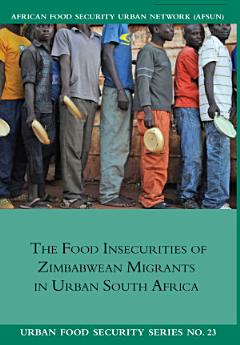The Food Insecurities of Zimbabwean Migr
Oct 2016 · African Books Collective
Ebook
52
Pages
family_home
Eligible
info
reportRatings and reviews aren’t verified Learn More
About this ebook
This report examines the food security status of Zimbabwean migrant households in the poorer areas of two major South African cities, Johannesburg and Cape Town. The vast majority were food insecure in terms of the amount of food to which they had access and the quality and diversity of their diet. What seems clear is that Zimbabwean migrants are significantly more food insecure than other low-income households. The primary reason for this appears to lie in pressures that include remittances of cash and goods back to family in Zimbabwe. The small literature on the impact of migrant remittances on food security tends to look only at the recipients and how their situation is improved. It does not look at the impact of remitting on those who send remittances. Most Zimbabwean migrants in South Africa feel a strong obligation to remit, but to do so they must make choices because of their limited and unpredictable income. Food is one of the first things to be sacrificed. Quantities decline, cheaper foods are preferred, and dietary quality and diversity inevitably suffer. This study found that while migrants were dissatisfied with the shrinking job market in South Africa, most felt that they would be unlikely to find work in Zimbabwe and that a return would worsen their households food security situation. In other words, while food insecurity in Zimbabwe is a major driver of migration to South Africa, food insecurity in South Africa is unlikely to encourage many to return.
Rate this ebook
Tell us what you think.
Reading information
Smartphones and tablets
Install the Google Play Books app for Android and iPad/iPhone. It syncs automatically with your account and allows you to read online or offline wherever you are.
Laptops and computers
You can listen to audiobooks purchased on Google Play using your computer's web browser.
eReaders and other devices
To read on e-ink devices like Kobo eReaders, you'll need to download a file and transfer it to your device. Follow the detailed Help Center instructions to transfer the files to supported eReaders.






